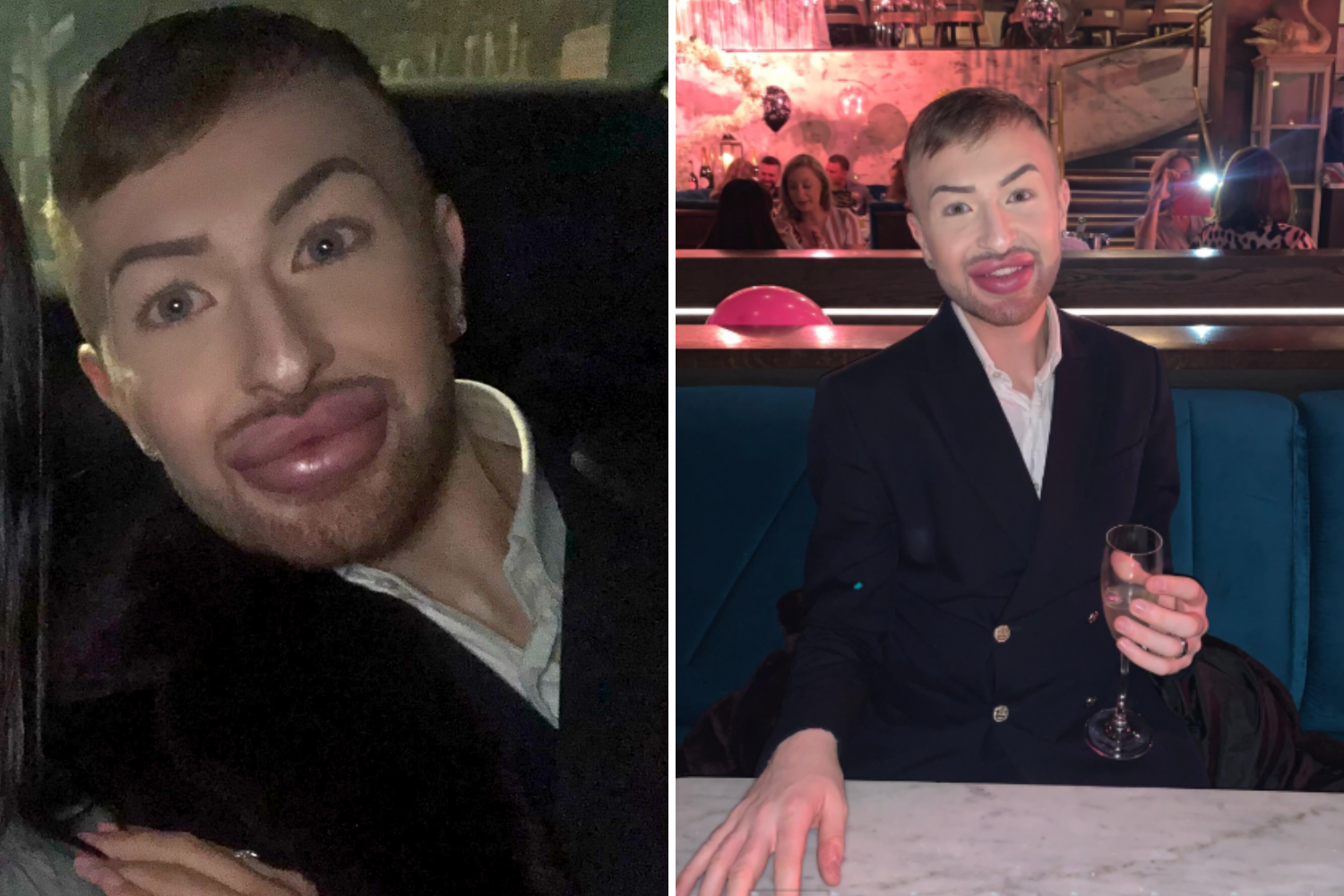I Was Addicted to Fillers and Spent $4K—Then I Had a Wake-Up Call

The Journey of a Man Who Overcame Cosmetic Addiction
A British man, Christopher Sharratt, who once spent thousands on extreme lip and facial fillers, has opened up about his decision to remove them and the dangers associated with cosmetic treatments. His story highlights the psychological and physical risks that come with excessive use of these procedures.
In before-and-after photos, Sharratt, now 25, revealed how years of injections left him with enlarged lips and facial swelling. He underwent four rounds of dissolver to return to a natural look. His journey began at age 17 when he lied about his age to get his first filler injections. What started as a small treatment quickly escalated, and he estimates spending around £3,500 ($4,400) on fillers over the years.
“I spent half a house deposit on that,” Sharratt said, reflecting on the financial burden. The results were addictive because of the swelling that followed each injection. “You have a millimeter and your lips swell up or wherever you have it on your face. And you’re like, oh my God, this swelling looks so good. A week later, the swelling goes down, and you’re like, oh c***, I need to go and get another millimeter.”
Psychologist Dr. Cali Estes, an expert in celebrity addiction, explained that while fillers aren’t chemically addictive, they can be psychologically. “Each injection gives an instant confidence boost, and the brain starts chasing that dopamine hit again—just like checking likes on social media,” she said.
Sharratt’s experience is not unique. Many people who start using fillers lose sight of the changes and seek more results. Estes calls this “aesthetic blindness.” “The brain recalibrates so quickly that what once looked dramatic now feels normal. They stop seeing the enhancements and keep chasing more,” she explained.
For Sharratt, the turning point came during the COVID-19 lockdown when he couldn’t access treatments. “I looked at my photos for the first time… and I was like, oh, I actually didn’t look that bad. I should have been a bit nicer to myself,” he reflected.
Dissolving the fillers was both painful and time-consuming. “I had four rounds of dissolver because I had so much filler in my lip. Cheeks and jaw were easy to get rid of, but I actually had to start pulling my lips out and putting it in the back because there was nowhere else to fill out,” he said. “It did take four whole rounds of dissolving to get rid of it.”
Push for Stricter Regulation
Sharratt’s experience highlighted the lack of oversight in Britain, where fillers are often administered in salons without medical supervision. “There needs to be so much more regulation in place,” he said. “No 17-year-old should be going to get fillers. Nobody.”
In the United States, dermal fillers are regulated by the Food and Drug Administration (FDA), which approves them only for adults and in specific cosmetic uses. There are no federal laws on minimum age for fillers, but many providers set a minimum age of 18, and some products are only FDA-cleared for patients 21 and older.
Rules on who can administer injections vary by state, but generally, only licensed medical professionals—including physicians, nurse practitioners, physician assistants, and, in some cases, dentists—are permitted to perform the procedures, often with requirements for additional training or physician supervision.
Sharratt emphasized that patients are rarely informed about long-term risks. “Nobody tells you the fact that it doesn’t dissolve… It moves around your face,” he said. “You don’t get told that if you overstretch your lips… parts of your face can actually remain stretched.”
“Fillers are often treated like beauty services, but they carry medical risks—including blindness. For those with body dysmorphia or addictive patterns, the lack of safeguards is dangerous,” Estes said. “We need stronger psychological screening and ethical limits to protect people—not just from physical harm, but from themselves.”
Now filler-free, Sharratt feels more approachable and confident in everyday life. “More people come up to me now than ever. People wouldn’t come up and say hello,” he said.
He hopes his story will raise awareness about the risks of cosmetic procedures and push for tighter rules. “Hopefully, I can be one of the few people to put my hand up, say I’ve made a mistake, we need to do something about this,” he said.
Post a Comment for "I Was Addicted to Fillers and Spent $4K—Then I Had a Wake-Up Call"
Post a Comment